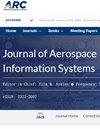基于深度学习的立方体卫星资源异常检测
IF 1.5
4区 工程技术
Q2 ENGINEERING, AEROSPACE
引用次数: 0
摘要
在计算资源有限的CubeSat系统及相关航天器上,探讨了利用人工神经网络进行星载异常检测的可行性。我们在实验室中使用CubeSat收集训练和评估数据,用于组件故障影响整个控制系统温度波动的场景。这些数据发布在一个开放的存储库中,指导选择合适的特征、神经网络架构和指标,包括我们的异常检测算法。与超出限制的方法相比,算法的精度和召回率有所提高,而我们对典型微控制器的开源实现显示出较小的内存开销,因此可以与现有的控制软件共存,而无需引入新的硬件。这些特点使我们的解决方案可以部署在立方体卫星上,从而可以部署在其他更先进的卫星上。本文章由计算机程序翻译,如有差异,请以英文原文为准。
Anomaly Detection Using Deep Learning Respecting the Resources on Board a CubeSat
We explore the feasibility of onboard anomaly detection using artificial neural networks for CubeSat systems and related spacecraft where computing resources are limited. We gather data for training and evaluation using a CubeSat in a laboratory for a scenario where a malfunctioning component affects temperature fluctuations across the control system. This data, published in an open repository, guide the selection of suitable features, neural network architecture, and metrics comprising our anomaly detection algorithm. The precision and recall of the algorithm demonstrate improvements as compared to out-of-limit methods, whereas our open-source implementation for a typical microcontroller exhibits small memory overhead, and hence may coexist with existing control software without introducing new hardware. These features make our solution feasible to deploy on board a CubeSat, and thus on other, more advanced types of satellites.
求助全文
通过发布文献求助,成功后即可免费获取论文全文。
去求助
来源期刊

Journal of Aerospace Information Systems
ENGINEERING, AEROSPACE-
CiteScore
3.70
自引率
13.30%
发文量
58
审稿时长
>12 weeks
期刊介绍:
This Journal is devoted to the dissemination of original archival research papers describing new theoretical developments, novel applications, and case studies regarding advances in aerospace computing, information, and networks and communication systems that address aerospace-specific issues. Issues related to signal processing, electromagnetics, antenna theory, and the basic networking hardware transmission technologies of a network are not within the scope of this journal. Topics include aerospace systems and software engineering; verification and validation of embedded systems; the field known as ‘big data,’ data analytics, machine learning, and knowledge management for aerospace systems; human-automation interaction and systems health management for aerospace systems. Applications of autonomous systems, systems engineering principles, and safety and mission assurance are of particular interest. The Journal also features Technical Notes that discuss particular technical innovations or applications in the topics described above. Papers are also sought that rigorously review the results of recent research developments. In addition to original research papers and reviews, the journal publishes articles that review books, conferences, social media, and new educational modes applicable to the scope of the Journal.
 求助内容:
求助内容: 应助结果提醒方式:
应助结果提醒方式:


